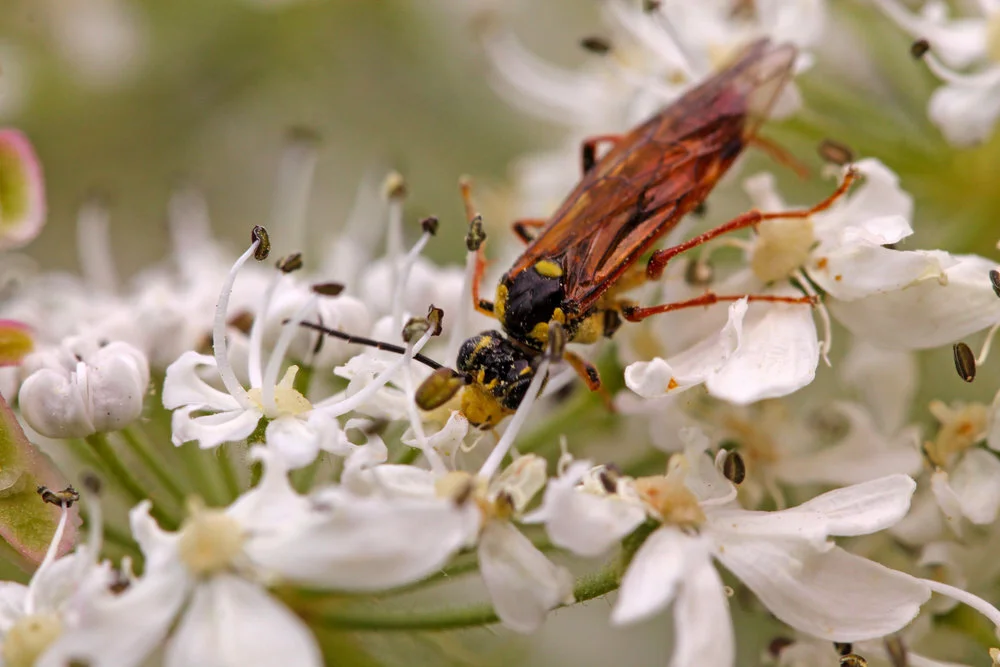Brahminy blind snake (Indotyphlops braminus) in Wailua River State Park in Hilo, Hawaiʻi 2004. (Photo © Jared Bernard)
Ask anyone in Hawaiʻi about where you can find snakes and you'll likely find yourself in an argument. The state pays a fortune in taxpayer dollars each year to prevent snakes from invading the islands. Specifically, they're concerned about the infamous brown tree snake that invaded Guam and promptly eradicated its bird populations. In response Hawaiʻi has battened down the hatches, even training dogs (beagles) to sniff out the slithering invaders on arriving aircraft. Yet there is already a snake that is happily established in Hawaiʻi, thank you very much: the brahminy blind snake.
The brahminy blind snake (Indotyphlops braminus) is a small subterranean worm-like snake native to Asia and Africa, but has spread around the world on the footsteps of people. Blind snakes are so-called because their subterranean lifestyles has yielded their eyes to be almost useless; translucent scales cover the eyes, admitting only hints of light. The brahminy blind snake possesses a small spur at the end of its tail. This species is also nicknamed “the flowerpot snake” because it is often transported to new ranges via potted ornamental plants, which is how it came to Hawaiʻi and other islands across the Pacific. There may only be a few islands that this snake has not infiltrated and no one has yet studied whether this snake is impacting the native insects.
In 2012, Smithsonian Institute zoologist Addison Wynn and her colleagues published their discovery of new species of blind snakes (aka thread snakes) in the journal Zootaxa. In the paper, they describe two new species in the Caroline Islands in Micronesia: Ramphotyphlops hatmaliyeb on Ulithi Atoll and R. adocetus on Ant Atoll. These islands are currently free of the brahminy blind snake, but nearby islands are not.
She tells me that the potential competition between the invasive brahminy blind snake and the native blind snakes is not known. “If I. braminus is introduced onto these islands, I don’t know whether there would be competition or not. Based on museum records, it’s not unusual for two or more species of blind snakes to be found together or in close proximity.”
The native blind snakes are larger than the invasive brahminy blind snake, which suggests the native ones can hunt larger prey, but Wynn says that the invasive one could still compete with juvenile native snakes.
“However, on small islands and atolls, larger prey may not be available, and suitable habitat and prey may be more limited, so competition between I. braminus and other species could be greater than what is found elsewhere,” she suggests. “Unfortunately, I don’t think anyone has studied competition between I. braminus and other blind snakes, nor what I. braminus is eating when it colonizes a new place.”
The native blind snake on Palau, R. acuticaudus, is declining as the population of the brahminy blind snakes increases, Wynn tells me, citing George Zug’s book Reptiles and Amphibians of the Pacific Islands. This indicates some level of competition between the native and non-native blind snakes on Palau.
She elaborates on another recent discovery of a native snake in Fiji and its possible interaction with the invasive brahminy blind snake. “Indotyphlops braminus does occur in Fiji,” she says, “but not on the island of Taveuni, where an undescribed species was recently rediscovered.” Wynn and her colleagues discovered a native blind snake closely related to the yellow-bellied blind snake, R. flaviventer, on the Fijian island of Taveuni, and their finding was published by Oryx in 2010. In their article, they describe that the brahminy blind snake has recently become established and commonplace on the Fijian island of Viti Levu.
Wynn explains to me that the brahminy blind snake is so successful because it is parthenogenetic. “I. braminus should have an advantage over similar non-parthenogenetic species,” she says. “All offspring in a clutch of I. braminus are females capable of producing another all-female clutch, but in non-parthenogenetic species, only about half of the offspring in a clutch are females capable of producing another clutch, the rest are males, so a population of I. braminus has the potential to increase much more quickly than other species.”
Parthenogenesis means that females do not require copulation to reproduce. Instead they give rise to clonal lineages, and as Wynn explains, every member of the population can reproduce. This basic concept makes asexual species very successful invaders. Although parthenogenesis is common among plants and some invertebrates, the brahminy blind snake is among a handful of examples of asexual vertebrates.
“I’m sure that parthenogenesis helps explain the success of I. braminus as a colonizer, but I suspect that it is not the entire reason. I’ve kept live specimens of I. braminus, and I always found them to be very hardy – they could live for weeks or months in glass jars filled with damp paper towels, and ate locally caught termites without hesitation. I have more limited experience with keeping other species of blind snakes, but my general impression is that specimens of other species don’t eat the local termites so readily, and they seem to languish and die more quickly than I. braminus. I suspect this vigor and willingness to eat the local food source helps explain the ability of I. braminus to colonize so well. Nevertheless, the ability to establish a new population with only a single female colonizer must be the reason for the speed that I. braminus seems to be spreading.”
She points out the contradiction that Hawaiʻi, which is so cautious of the invasion of snakes, harbors a snake that could potentially impact the native insects and possibly displace native thread snakes of the Pacific.
“Unfortunately, there seems to be little concern about the impact of invasive animals on native insects such as ants and termites,” Wynn laments. “I’ve found it ironic that there is so much concern over the impact of brown tree snakes on the native bird fauna of Guam, but no one mentions the impact on native termites or ants by I. braminus there!”







